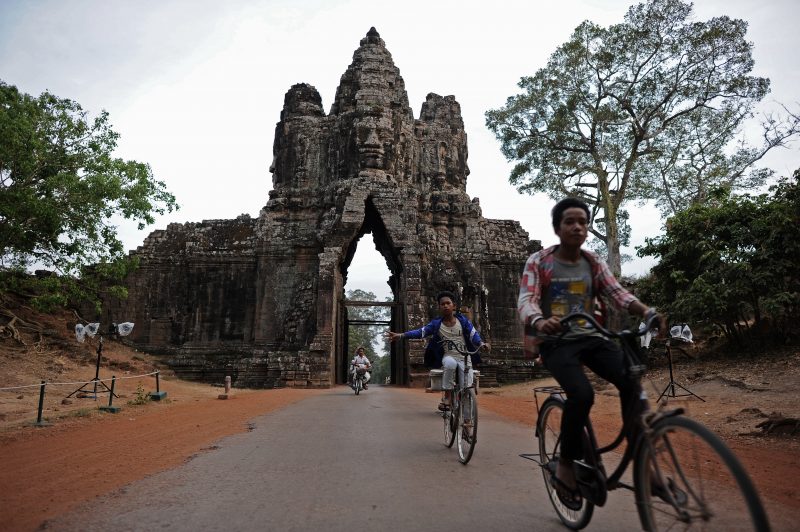Angkor decline gradual rather than catastrophic: study
An entry gate to Angkor Thom, capital of the ancient Khmer empire (CHRISTOPHE ARCHAMBAULT)
Washington (AFP) – Angkor, the ancient capital of the Khmer empire, appears to have suffered a gradual decline rather than a catastrophic collapse, according to a study published on Monday.
Archaeologists and historians have long sought to explain the 15th-century abandonment of Angkor, with many attributing it to the 1431 invasion by Thai forces from Ayutthaya.
“The historical record is effectively blank for the 15th century at Angkor,” said Dan Penny, a member of a team of Australian and Cambodian archaeologists and geographers who took part in the study published in the Proceedings of the National Academy of Sciences (PNAS).
“We don’t have a written record that tells us why they left or when or how,” said Penny of the School of Geosciences at the University of Sydney. “Everything that survived is carved on stone.”
For the study, the team examined 70-centimeter sediment cores taken from a moat that surrounded Angkor Thom, the capital of the Khmer empire.
Penny said the cores serve as a “natural history book recording changes in land use, and climate, and in vegetation, year after year.”
Where humans live they leave traces through fire, soil erosion through agriculture and disturbed vegetation. When they leave, conditions change.
In the first decades of the 14th century, Penny said you start to see a decline in land use, wood burning, destabilized vegetation and a reduction in soil erosion.
By the end of the 14th century, “the southern moat of Angkor Thom was overgrown with vegetation, and management, by implication, had ceased,” the authors said in the study.
“Angkor was never fully abandoned,” Penny said, but “the elite were shifting away from Angkor,” moving to new communities elsewhere with more commercial opportunities.
“This was not a collapse,” Penny said. “This was in fact a decisive choice to shift focus away from Angkor.”
“While the breakdown of Angkor’s hydraulic network, most likely associated with climate variability in the mid-14th and early 15th centuries, represents the end of Angkor as a viable settlement, our data indicate that it was presaged by a protracted demographic decline,” the study said.
“This raises the likelihood that the urban elite did not leave Angkor because the infrastructure failed, as has been suggested, but that the infrastructure failed (or was not maintained and repaired) because the urban elites had already left.”
“The absence of Angkor’s ruling elite by the end of the 14th century casts a different light over the Ayutthayan occupation of the city from 1431 CE, and over Cambodian narratives that emphasize loss at the hands of interventionist neighboring states,” they added.
Disclaimer: This story is published from a syndicated feed. Siliconeer does not assume any liability for the above story. Validity of the above story is for 7 Days from original date of publishing. Content copyright AFP.


